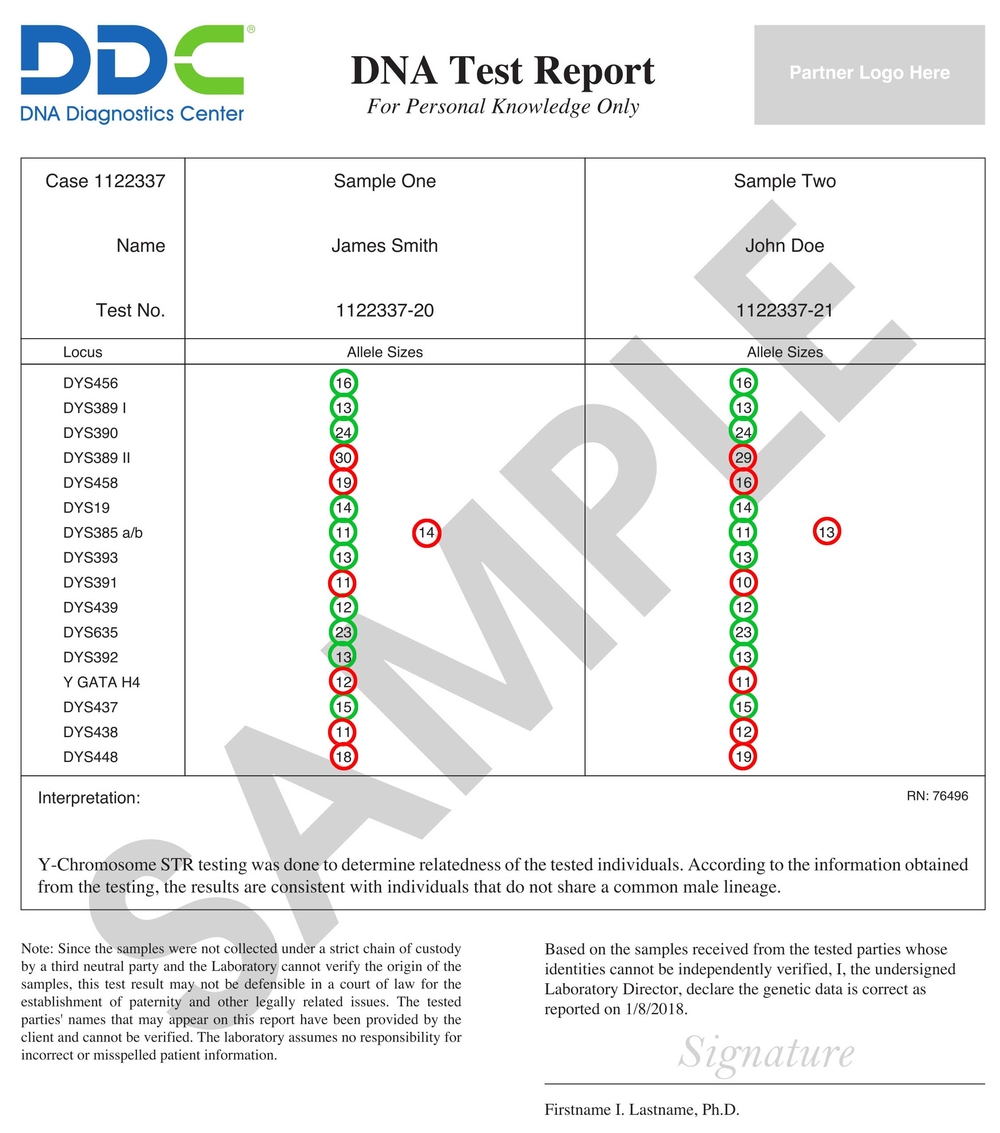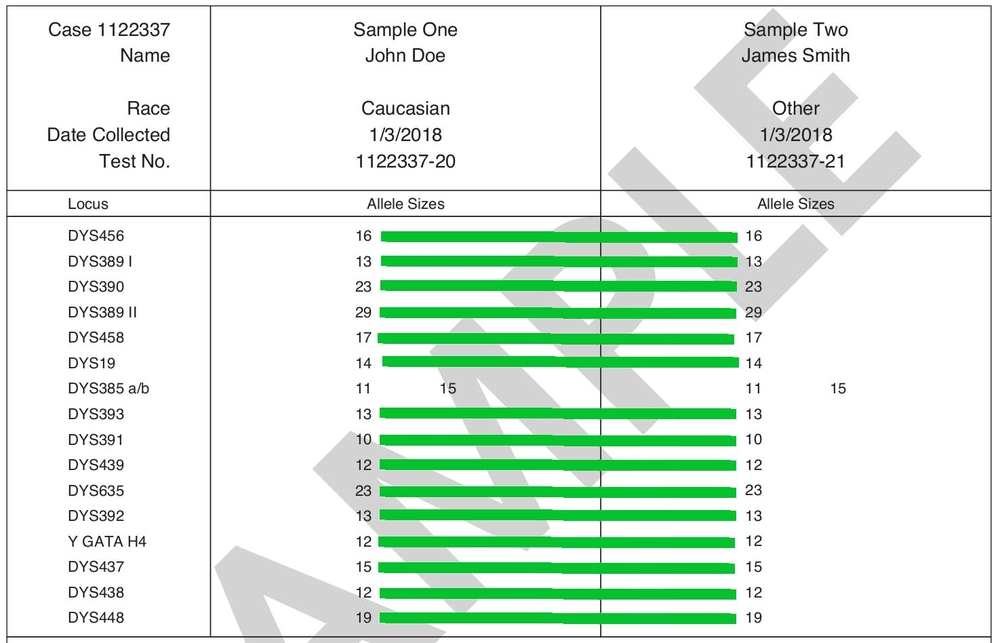

| Home | Paternity Test | DNA Help | About Us | Contact Us / Location | SiteMap |
Sometimes an alleged father is not available for a DNA test, but people want to know whether or not a male child might be related to the family of the alleged father. A paternity test is best, but if the father is not available, then a Y chromosome Y-STR test is one of the other options if another suitable male relative is available for testing. There are other options, too, but sometimes the Y-STR test is used if there is only one relative available for testing, and the two people allegedly share a male lineage.
Only males have a Y chromosome, i.e., the Y chromosome is passed from fathers to only sons. In humans, cells have one pair of sex chromosomes. In males, it is one Y chromosome and one X chromosome. In females, it is two X chromosomes. Females do not have a Y chromosome.
Therefore, a male would have received the same Y chromosome as his father, grandfather, great grandfather, uncle on his father's side, and cousin by an uncle on his father's side of the family. Other, more distant male relatives will also have received the same Y chromosome from a male lineage.
The human Y chromosome has a high mutation rate, and some parts of the Y chromosome mutate faster than other parts. Therefore, differences appear between male lineages over time.
If two people, such as suspected cousins, or a suspected uncle-nephew, want to know whether or not they truly come from the same male lineage, then a Y chromosome comparison may be of interest. If the Y chromosomes have many mismatches, then the two people are not related by male lineage. However, if the Y chromosomes match, then they share the same male lineage, either as suspected, or possibly by another path within the same male lineage other than the way they suspect. A match does not mean for sure that the two people are related as alleged, it just means they might be, and we can't rule it out. It's also possible that somebody else in the extended family might be the father, or possibly even in the community as a distant relative. Please also see the possibility of a mutation, discussed further down this page.
In the modern world, there is so much immigration, relocation of people, and mixing of DNA locally between people of far away family origins, that Y chromosome tests have been more of interest in many cases in urban places with a mix of people from different places, unlike doing a Y chromosome test in a tribal area of much less genetic diversity.
Unlike autosomal DNA test reports, our Y-STR DNA test reports do not state a probability of being related. There are various possibilities to consider which are not the same as with an autosomal DNA test.
Y-STR tests are popular when only one male relative is available for testing. This is because another kind of DNA test, based on autosomal (non-sex chromosome) testing, between only two people which do not involve a parent, grandparent, or sibling, but instead only one alleged uncle or aunt, may be significantly more expensive and/or might not come up with an acceptable percent probability of being related/unrelated for a particular autosomal test.
For example, a common kind of test with an uncle, called an "avuncular" test, might come up with a very high or very low percent probability which is acceptable, but it may instead come up with something closer to 50% in the end which might not be acceptable. We don't want to "oversell" avuncular tests.
There is also an option of doing both kinds of tests, of course.
Below are two sample Y-STR test reports, one which is consistent with a shared male lineage, and one which is not.
First, a sample Y-STR DNA Test Report which shows the two people are not related. The mismatches are circled in red, but you can see there are also matches circled in green, since a comparison of the Y chromosome between two unrelated human men will still show some matches. (The actual DNA Test Report does not circle in red and green. It's circled here on the web page just for educational purposes.)

Secondly, for comparison, the data section of a sample Y-STR DNA Test Report in which there are all matches, below. (The actual DNA Test Report does not have the green lines. They are drawn on the image on this web page just to make it easier to see things more quickly.):

It is important to note that sometimes there is only one mismatch. That can be a mutation in a recent generation, and does not necessarily exclude the man from having the family relationship. Most often, there are either no mismatches or many mismatches, but exceptions occasionally happen.
Generally, the Y chromosome mutates faster than the rest of the genome. (The Y chromosome is quite interesting ... and it has more "junk" DNA in it, and much lower information content relative to its length ...)
 thailand-dna-test.com > Family DNA Tests > Male lineage, Y-STR
thailand-dna-test.com > Family DNA Tests > Male lineage, Y-STR
Homepage
Paternity DNA Test
How DNA Testing Works
Prices
Remote Locations
Mailed kits, self-collection
No Blood, No Pain
Anonymity and confidentiality
Personal vs. Legal Tests
Western Embassies, Immigration, Thai Government
Corruption and Bribes
Can you trust us?
Official Certifications
Hair, blood, fingernails...
Psychological Issues
Require Breastfeeding
Other DNA Tests
Policies and Confidentiality
FAQ
About Us
Contact Us, Map
| Home | Paternity Test | DNA Help | About Us | Contact Us / Location | SiteMap |

